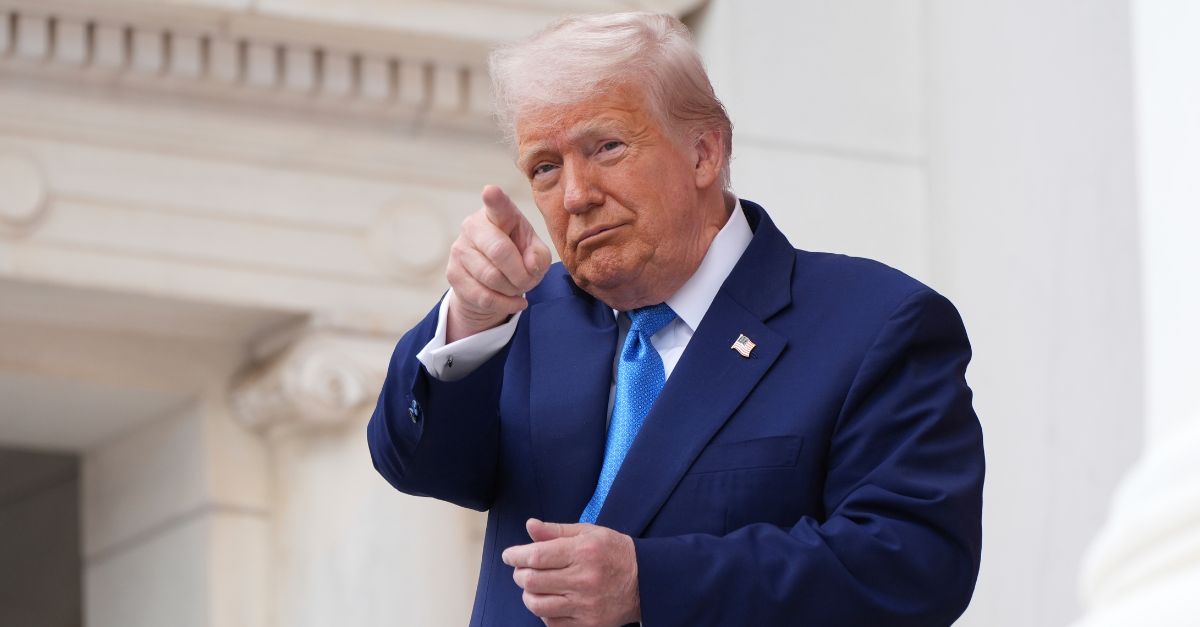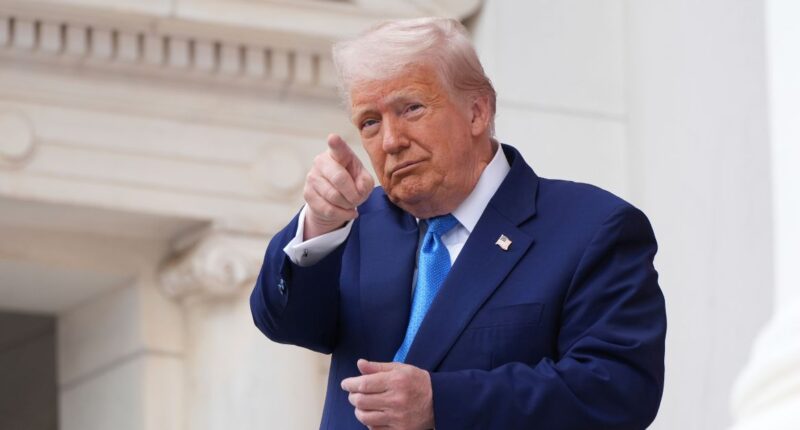
President Donald Trump was present at the 157th National Memorial Day Observance at Arlington National Cemetery on Monday, May 26, 2025, in Arlington, Virginia. The event was captured in a photo by Jacquelyn Martin.
An executive order issued by President Trump targeted a law firm for its actions and was later deemed unconstitutional. The law firm in question is now seeking to broaden the scope of an injunction against this executive order.
On a specific date, both the 45th and 47th president signed an Executive Order titled “Addressing Risks from WilmerHale.” This order accused the Los Angeles-based law firm Wilmer Cutler Pickering Hale and Dorr LLP, also known as WilmerHale, of behavior deemed harmful to crucial American interests and sought to exclude its employees from federal government involvement.
On March 28, WilmerHale filed a 64-page complaint in Washington, D.C., asking the court to enjoin Trump’s executive order as “unconstitutional.” The government, in turn, moved to dismiss the lawsuit entirely, turning the dispute into a battle over motions for summary judgment.
On May 27, Senior U.S. District Judge Richard J. Leon, a George W. Bush appointee, issued an emphatic ruling for the plaintiffs in the form of a 73-page memorandum opinion featuring no fewer than 27 exclamation points — used to express disdain for what the court views as the severity of the constitutional violations in Trump’s order.
Love true crime? Sign up for our newsletter, The Law&Crime Docket, to get the latest real-life crime stories delivered right to your inbox.
“I have concluded that this Order must be struck down in its entirety as unconstitutional,” Leon wrote. “Indeed, to rule otherwise would be unfaithful to the judgment and vision of the Founding Fathers!”
Still, despite the volubly chiding nature of Leon’s order, the Trump administration is allegedly declining to distribute the ruling to all of the agencies plausibly subject to the original executive order.
Now, in a six-page motion to amend the judgment, the law firm says its lawsuit was fashioned in such a way so as to explicitly encompass the entire federal government.
“WilmerHale’s complaint named 52 defendants: 26 federal government agencies, 25 federal officers (sued in their official capacities), and the United States,” the filing reads. “The complaint explained that the United States was named ‘to ensure that the relief ordered by the Court will apply government-wide.’ Such comprehensive relief was necessary both because ‘WilmerHale’s employees interact with — and their attorneys appear before — dozens of different federal agencies’ and because Executive Order 14250 ‘generally directs all federal agencies to take specified action.””
In the motion, the law firm says it tried to get the government to notify all the “covered agencies” of the judgment in Leon’s order.
The government, in turn, would not agree to do so.
“Government counsel indicated that the government was not willing to notify these agencies of the Court’s order,” the motion reads.
So, the law firm tried again — trying a slightly different tactic by suggesting the receipt of the order was all but a fait accompli.
Again, the Trump administration refused.
A few days later, WilmerHale’s counsel followed up with a second email, pointing out that the agencies in question “were subject to Executive Order 14250 and received notice of it,” and that, unless they are alerted that this Court has declared it null and void, there is a risk that they will “continue to enforce an Executive Order that has been held unconstitutional.” In response, government counsel confirmed that the government will not agree to distribute the Court’s order “beyond the agency defendants” and “would object to distribution of the order” to other covered agencies, supposedly because “such an effort would be futile without their being a named party.”
In other words, the law firm sued several dozen named agencies — and the United States broadly — in the hope that it would be clear and understood they were suing the entirety of the federal government covered by Trump’s order. But now that the dust has settled, the Trump administration claims the lawsuit — and concomitant injunction — only covers the enumerated agencies listed at the outset.
“As a result of this refusal, WilmerHale is at risk that an executive order this Court has ‘struck down in its entirety as unconstitutional,’ will nevertheless be enforced against it by agencies and officers who may not be aware (or could potentially claim unawareness) of either this Court’s declaratory judgment or their obligation to comply with that declaration,” the motion warns.
What’s more, according to the law firm, the Trump administration has so far “not fully complied” by the terms of the court order as written.
In Leon’s order, the government was directed that each of the named agency defendants was to “immediately issue guidance to their officers, staff, employees, and contractors, instructing them to disregard Executive Order 14250.” And, as a follow-up compliance measure, attorneys for the government were supposed to “provide counsel for WilmerHale with copies of such guidance within seven (7) days of issuance.”
To hear WilmerHale tell it, at least “six of the named defendant agencies” had not provided such guidance as of this past weekend.
“WilmerHale asks the Court to amend its judgment so that the permanent injunction applies to every agency and officer subject to Executive Order 14250, not just the 51 named in the complaint,” the motion goes on. “Such relief is necessary in light of this Court’s (correct) holding that ‘the United States is a proper defendant’ in this case, and its entry of a declaratory judgment that binds the entire government.”
The law firm insists this is not new ground — for either side.
In an earlier motion to dismiss the lawsuit, the government essayed the argument that relief granted by the court could only apply to the defendants named in the complaint itself. But, WilmerHale points out, another judge enjoined the entire relevant apparatus of the federal government from enforcing a substantially similar executive order targeting the law firm of Jenner & Block.
“As Judge Bates explained in a decision holding unconstitutional the similar executive order against another law firm, Jenner & Block, nothing in the APA (or any other provision of law) requires that a plaintiff ‘list the federal officers it seeks to enjoin … in the caption of the complaint,’” the motion continues. “The same result is needed here.”
Thorough relief was facilitated by the plaintiffs in the other case by submitting an appendix listing the germane federal officers. To that end, WilmerHale filed a 14-page appendix along with its motion which contains hundreds of agencies and respective titles.
“[W]e urge the Court to amend its Order to enjoin these agencies and officials to comply with its ruling,” the motion concludes.









